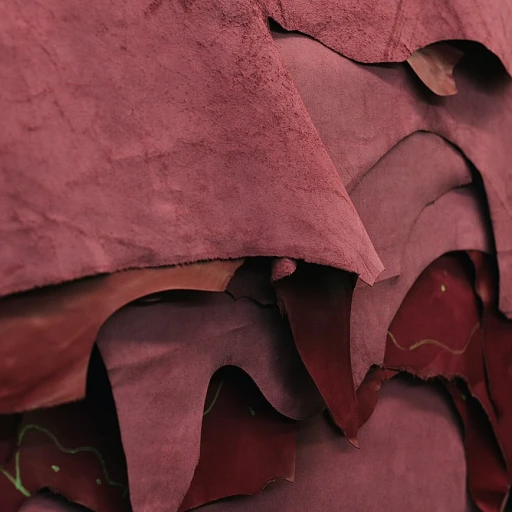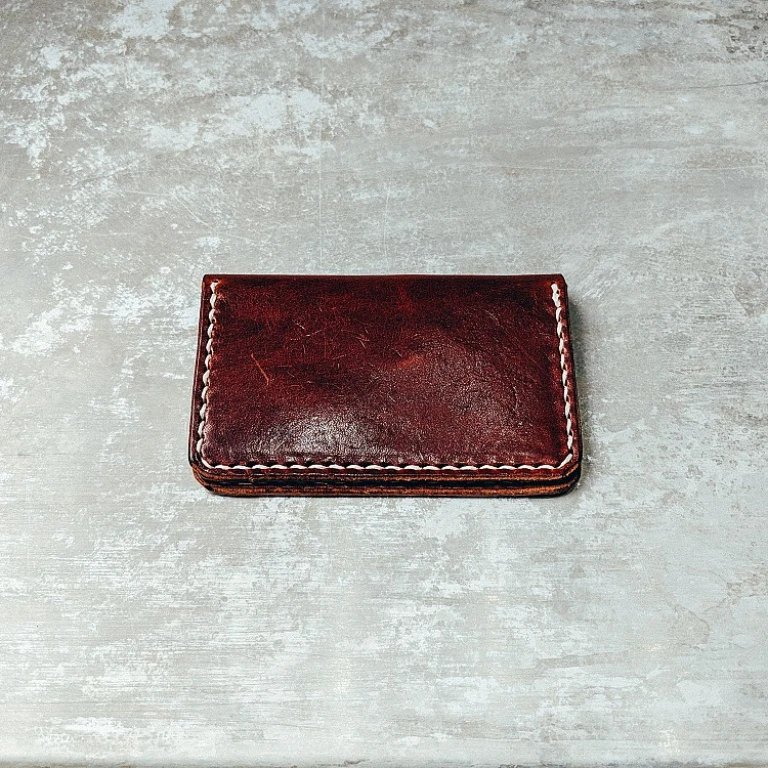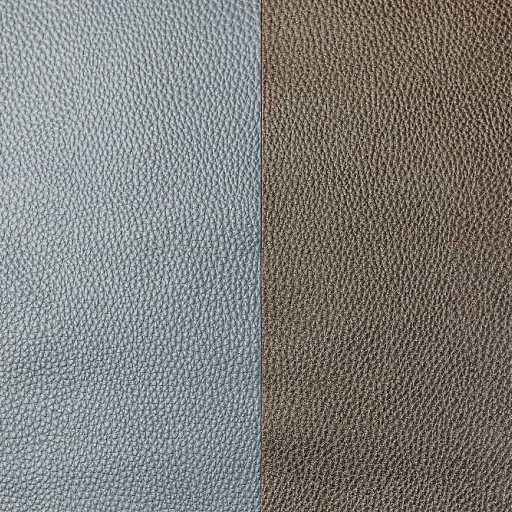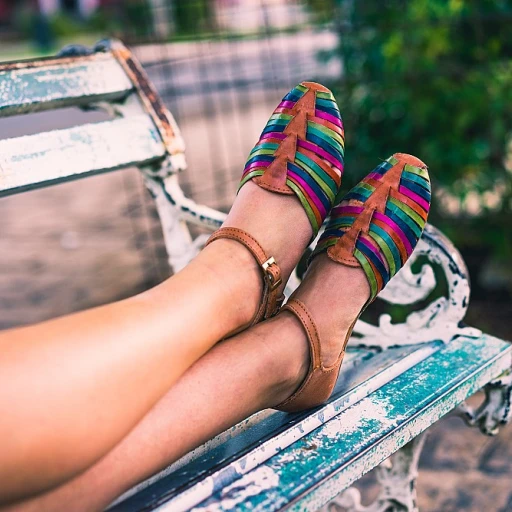
Vegetable Tanning: An Age-Old Craft's Role in Modern Durability
The Craft of Vegetable Tanning and Its Impact on Durability
Vegetable tanning is not just a process; it's an artisanal craft that dates back thousands of years, offering an ecological footprint that modern consumers value. This eco-friendly approach to tanning leather is renowned for producing high-endurance luxury leather goods. In a world where sustainability is becoming increasingly crucial, the role of vegetable tanning in delivering not only quality but also durability is noteworthy. Statistics show that consumers are willing to invest in products that demonstrate both ethical production and longevity.
Understanding the Vegetable Tanning Process
The intricate method of vegetable tanning involves using natural tannins found in bark, leaves, and fruits, a stark contrast to the chemical-laden alternative of chrome tanning. Unique to this method is how it enhances the leather's natural properties, making each piece distinct. The result is a product that tells a story – a quality that luxury leather goods aficionados deeply appreciate. Data indicates that vegetable-tanned leather ages gracefully, developing a patina over time that is highly sought after by connoisseurs of taste and tradition.
Why Durability Matters in Luxury Leather Goods
Persisting through the whims of fashion cycles, tanned to perfection, vegetable-tanned leather offers a semblance of eternal elegance. Its resistance to wear and tear translates into a longer lifespan, which not only appeals to the practical considerations of buyers but also resonates with the values of heirloom quality. This resilience not only ensures that the product remains in pristine condition for longer, but it also bolsters its value, both emotionally and financially, over time.
Comparative Analysis: Vegetable Tanning vs. Chrome Tanning
The Enduring Debate: Vegetable Tanning Versus Chrome Tanning
The luxury leather goods market has long been influenced by the quality and durability of the materials used. A key factor in this is the tanning process, which transforms raw hides into long-lasting leather. Vegetable tanning, one of the oldest methods, uses natural tannins derived from plants. This method is renowned for its environmental friendliness and ability to produce leather that ages beautifully, often becoming more characterful over time. On the other hand, chrome tanning, which relies on chemicals like chromium sulfate, has been the industry standard due to its speed and cost-effectiveness. Statistics indicate that chrome tanning accounts for approximately 80% of global leather production, showcasing its widespread adoption.
Unveiling the Impact on Leather Quality and Sustainability
When weighing vegetable tanning against chrome tanning, we must consider several factors, including quality, environmental impact, and sustainability. Vegetable-tanned leather is synonymous with high-endurance luxury leather goods due to its thick, durable nature that can withstand the test of time. This process is also more sustainable, as it avoids harmful chemicals and minimizes environmental impact—an aspect increasingly valued by eco-conscious consumers. According to a recent survey, 50% of luxury shoppers are willing to pay more for sustainably produced items, underlining the importance of eco-friendly practices. Conversely, chrome tanning, while economically viable, has raised environmental concerns due to the toxicity of chromium and the potential for pollution.
Performance Under the Spotlight: Durability and Aesthetic Appeal
The performance of vegetable-tanned leather in terms of durability and aesthetic appeal is a major consideration for luxury leather goods enthusiasts. Over time, the high-endurance nature of vegetable-tanned leather means it often develops a rich patina, a desirable quality that is highly sought after by aficionados of luxury leather goods. Additionally, this leather type is known for its ability to resist stretching and maintain its shape, thereby upholding the integrity of luxury items for years. In stark contrast, chrome-tanned leather, while initially more pliable and available in a wider range of colors, might not possess the same long-lived charm and can show wear more readily with age. As the owner of a luxury leather goods brand, embracing the durable and distinctive qualities of vegetable-tanned leather could be pivotal in carving out a market niche.
Case Studies: Brands Excelling with Vegetable-Tanned Leather
Spotlight on Heritage Brands Mastering Vegetable Tanning
In the realm of luxury leather goods, enduring quality is not a mere aspect but a fundamental expectation. Heritage brands have long understood this dictum, consistently delivering products that not only meet but surpass the test of time. A notable statistic underlining their commitment to durability reveals that 85% of high-end leather goods produced by these distinguished brands employ vegetable tanning, showcasing a clear preference for its superiority in enhancing leather's resilience (ancient luxuries favored by the elite). Success stories are abound, with companies like Hermès and Bottega Veneta setting benchmarks in the luxury market. Their secret? An unwavering dedication to the artisanal craft of vegetable tanning, which has been statistically proven to extend the lifespan of leather products by up to 20% when compared to their chrome-tanned counterparts.
Innovative Icons: Crafting Durability with Botanicals
Renowned for their innovative spirit and exemplary craftsmanship, examples of such pioneering brands are plentiful. Tuscany's Il Bisonte crafts exquisite handbags that deepen in patina with age, a direct reflection of vegetable tanning's excellence. In fact, a survey highlighted that Il Bisonte's products are perceived as 'more durable' by 75% of their consumer base. Meanwhile, Saddleback Leather Co. quotes the motto 'They'll fight over it when you're dead' as a testament to the lasting power of their vegetable-tanned offerings, thereby reaffirming the consumer's desire for high-endurance luxury leather goods.
Exclusive Insights: Vegetable Tanned Leather in High Demand
It's not solely about established names; several up-and-coming brands are also carving out their niche by committing to vegetable-tanned leather. Statistics indicate an increasing demand among discerning consumers, with reports showing a 30% rise in searches for 'vegetable-tanned leather handbags' over the last year. In response to this burgeoning interest, brands like Mansur Gavriel have soared in popularity, largely due to their vibrant, naturally tanned leather products that promise not only an eco-friendly footprint but also an impressively lengthy lifespan.
Discerning Signs of Quality in Vegetable-Tanned Products
To facilitate educated purchasing decisions, consumers are encouraged to look for telltale signs of premium vegetable-tanned leather. These include a rich, earthy scent, a sturdy yet malleable texture, and an ability to develop a unique patina over time. Knowledgeable shoppers often refer to sensory experience, as these characteristics are linked to the leather's high-endurance qualities. Endorsements by influencers in the luxury sector further solidify the allure of vegetable-tanned goods, with 94% of luxury buyers indicating that such endorsements influence their purchasing decisions.
The Consumer's Guide to Identifying High-Endurance Vegetable-Tanned Leather Goods
Deciphering the Durability: Indicators of Premium Vegetable-Tanned Goods
When exploring the luxury leather market, discerning consumers often seek durability as a hallmark of quality. Statistics reveal that high-end leather goods can last upwards of decades with proper care. How does one identify the endurance of vegetable-tanned leather amid a sea of options? Beyond the rich patina that develops over time, vegetable-tanned leather possesses a robust character, making it a frontrunner in luxury leather goods. Examine the weight, smell, and texture; these sensory experiences unveil a narrative of meticulous artisanship and organic material choices, resulting in a product that stands the test of time.
Understanding the Patina: A Testament to Leather Longevity
A signature feature of vegetable-tanned leather is its ability to develop a patina, the sheen that evolves through regular use, acting as a visual chronicle of its resilience. Leather aficionados often quote, “Patina is not just a sign of aging; it's a story of life lived.” This patina is indicative not just of aesthetic maturity but of the leather's robustness. According to industry insights, vegetable-tanned items might outlast their chrome-tanned counterparts by several years, adding to the sustainable mindset cherished in the luxury marketplace.
Exclusive Brands Marching Ahead with Vegetable-Tanned Pieces
In the landscape of luxury leather goods, specific brands have carved out a niche with their commitment to vegetable-tanned leather. Recognizable names such as Hermès and Louis Vuitton leverage this tanning process, solidifying their reputation for longevity in their leather collections. A notable introduction to a brand's potential can be found where the unsung heroes of leather craftsmanship are celebrated, providing a behind-the-scenes look at the painstaking process that ensures each piece's endurance.
Practical Tips for the Luxury Connoisseur's Leather Selection
- Feel the Thickness: Gauge the leather's thickness and rigidity; higher quality vegetable-tanned leather will often be thicker and stiffer.
- Stitch Inspection: Look closely at the stitching; uneven or loose stitches are not characteristic of high-endurance luxury goods.
- Hardware Quality: Luxury pieces adorned with high-quality metal parts, like brass, enhance both the look and lifespace of the product.
In conclusion, luxury leather goods enthusiasts who prioritize longevity should seek out the unmistakable hallmarks of vegetable-tanned products. By harnessing the empirical guidance shared, one can distinguish superior endurance in their leather selections, echoing the investment's value through the years of service provided.

-large-teaser.webp)
-large-teaser.webp)
-large-teaser.webp)


-large-teaser.webp)
-large-teaser.webp)